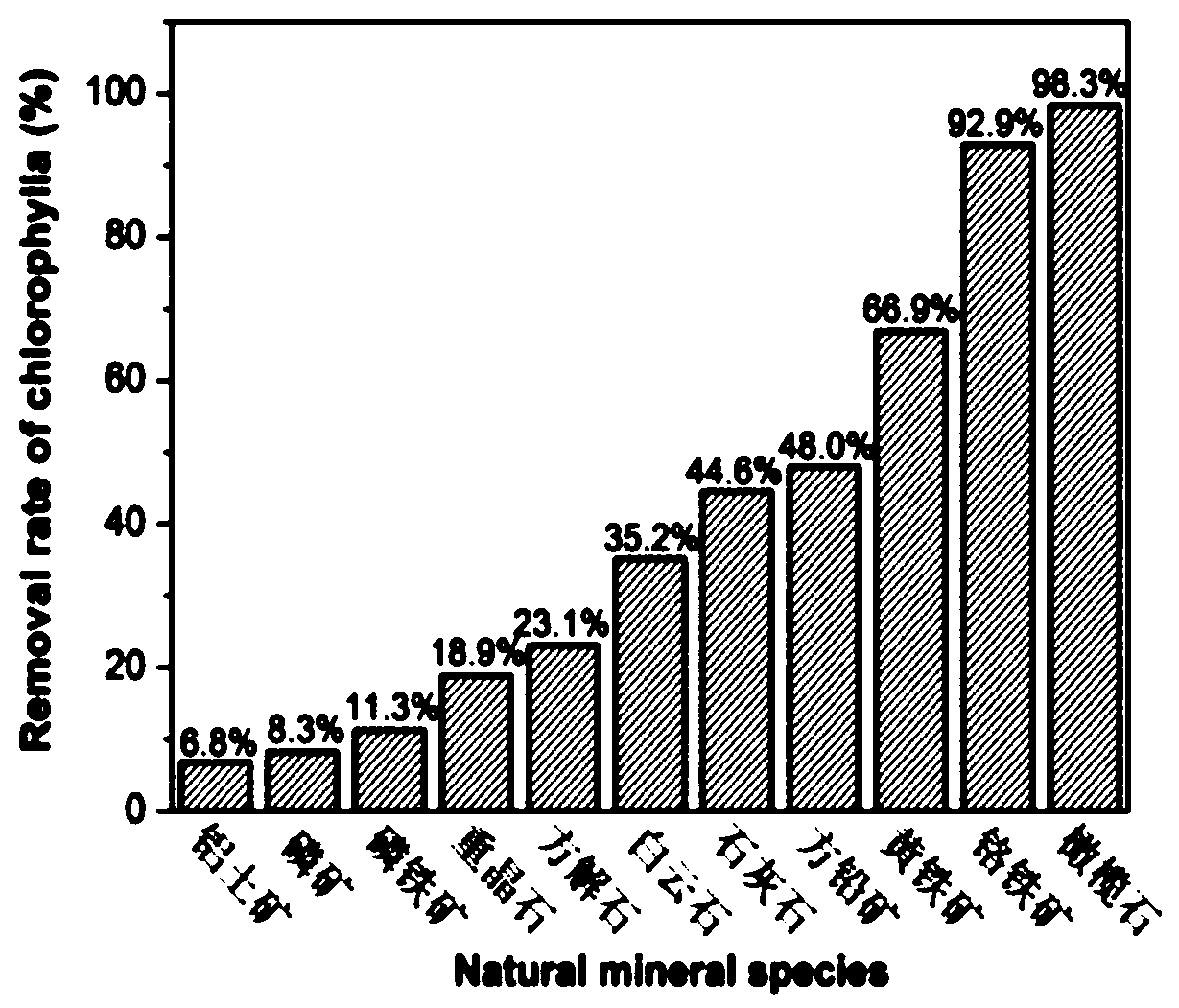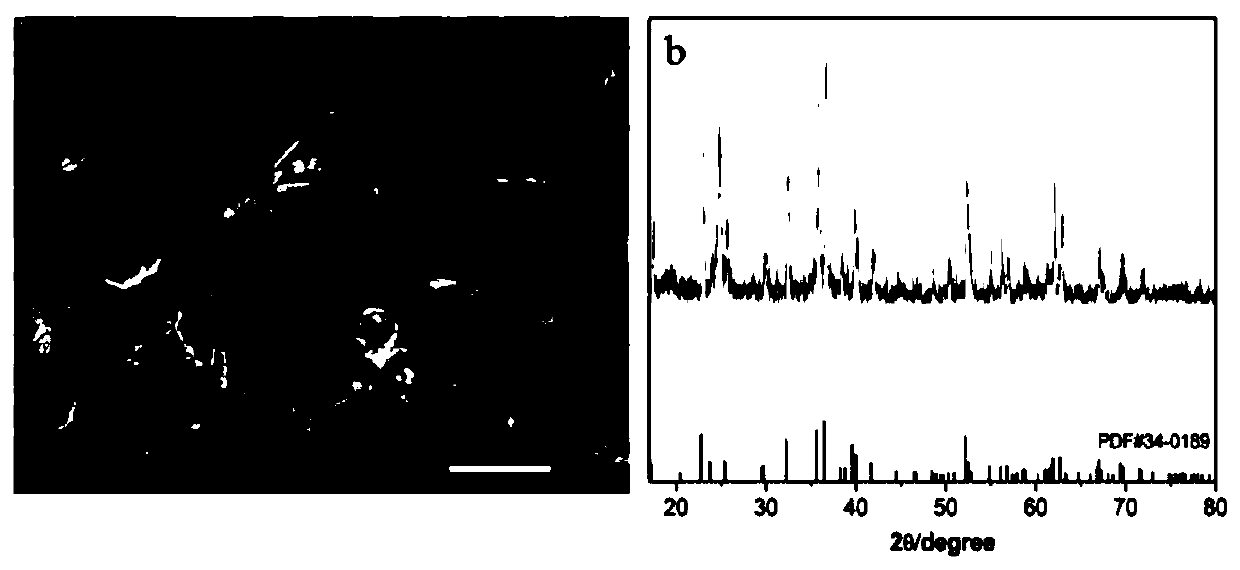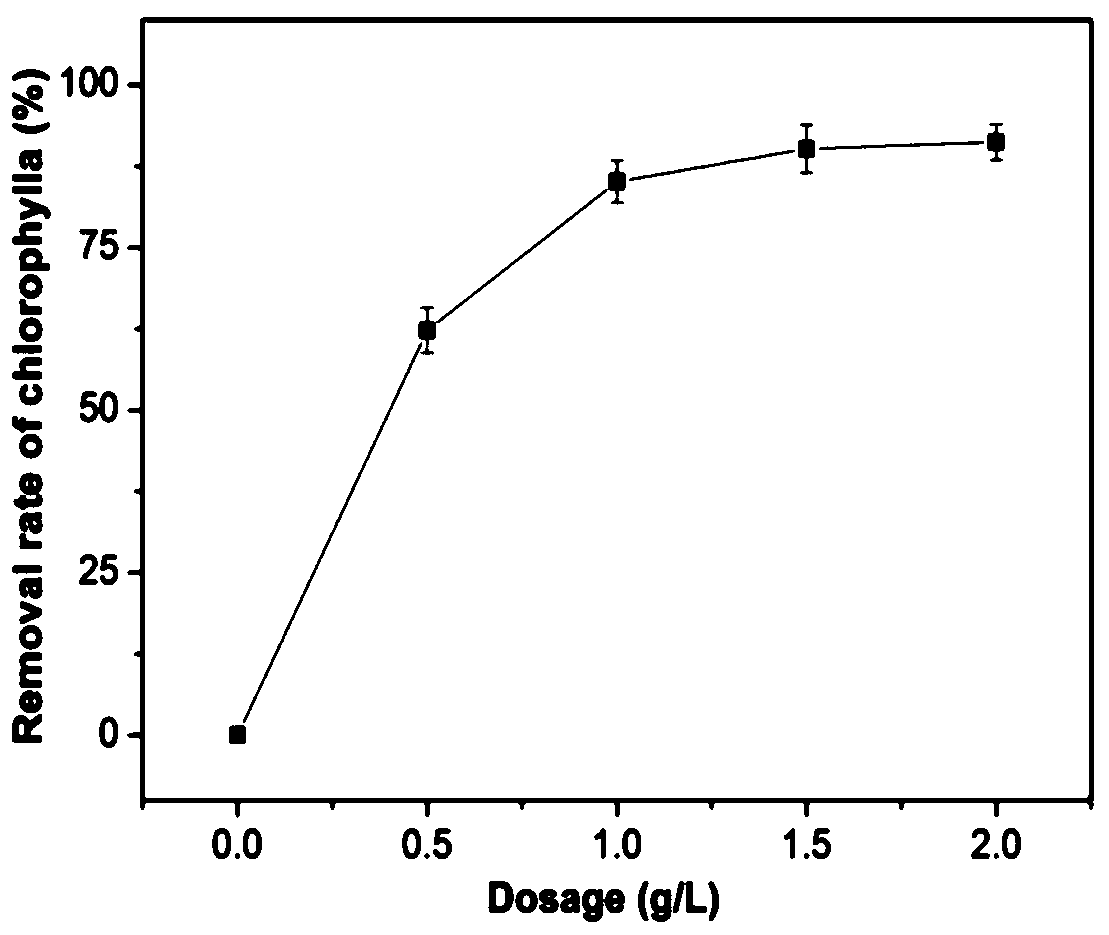Application of olivine to adsorption and removal of microcystis aeruginosa
A technology of Microcystis aeruginosa and olivine, applied in the direction of adsorbed water/sewage treatment, etc., can solve problems such as difficulty in evaluating the impact of benthic organisms, complex pretreatment, and affecting the respiration and feeding of aquatic organisms.
- Summary
- Abstract
- Description
- Claims
- Application Information
AI Technical Summary
Problems solved by technology
Method used
Image
Examples
Embodiment 1
[0023] Realize that the used reagent of technical scheme of the present invention and instrument are as follows:
[0024] Main experimental reagents: natural mineral samples are provided by Central South Institute of Metallurgical Geology and Yichang Institute of Geology and Mineral Resources (No. 502), and the particle size screened by the experiment is between 180-200 mesh.
[0025] Main experimental instruments: X-ray diffractometer (XRD, D / max2500, Rigaku, Japan); cold-field scanning electron microscope (SEM, JSM-7500F, JEOL, Japan); ultraviolet-visible spectrophotometer (UV-Vis DRS, Lambda25, USA); pH meter (Delta 320, Mettler-Toledo, Shanghai Co., Ltd.); Zeta potential analyzer (Malvern Zetasizer, 2000HSA, UK).
[0026] Characterization of olivine
[0027] The crystal form of natural olivine samples was determined by X-ray diffractometer, and the scanning 2θ range was 20°-60°; the morphology of natural olivine was determined by cold-field scanning electron microscopy. ...
PUM
| Property | Measurement | Unit |
|---|---|---|
| particle size (mesh) | aaaaa | aaaaa |
Abstract
Description
Claims
Application Information
 Login to View More
Login to View More - R&D
- Intellectual Property
- Life Sciences
- Materials
- Tech Scout
- Unparalleled Data Quality
- Higher Quality Content
- 60% Fewer Hallucinations
Browse by: Latest US Patents, China's latest patents, Technical Efficacy Thesaurus, Application Domain, Technology Topic, Popular Technical Reports.
© 2025 PatSnap. All rights reserved.Legal|Privacy policy|Modern Slavery Act Transparency Statement|Sitemap|About US| Contact US: help@patsnap.com



